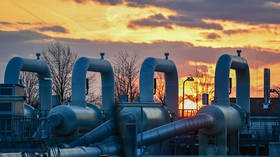Russia becomes India’s number one supplier of light-end oil product

Sellers of Russian naphtha shipped around 770,000 tons of the light-end oil product to India in the period January to September, compared to only 154,000 tons sold during all of 2022, Reuters reported earlier this week, citing ship-tracking data.
According to the details from Vortexa, India imported 2.1 million metric tons of naphtha, which is primarily used to make plastics and petrochemicals, during the first nine months of this year, of which 37% were Russian-origin product.
Meanwhile, naphtha supplies to India from the United Arab Emirates, which had long been its top supplier of the imported oil product due to close proximity, declined to 686,000 tons in the January-to-September period, from some 697,000 tons scored in the same period a year ago.
Naphtha is a flammable mixture of liquid hydrocarbons obtained by direct distillation of oil, as well as from coal tar, shale deposits, tar sands, and the destructive distillation of wood. It was once used as motor oil for tractors, and now serves as raw material for petrochemical industry.
Discounts on Russian energy supplies along with the high cost of natural gas, an alternative to naphtha for petrochemical producers, prompted Indian producers to boost imports of naphtha from Russia.
Despite the massive surge in buying recorded this year, India is ranked just seventh among the world’s top importers of Russian naphtha, data from ship-tracker Kpler shows. Moreover, Asia’s third-largest economy is also a major naphtha producer and exporter.
Most of India’s imported Russian naphtha was purchased by Reliance Industries, an Indian holding company that reportedly operates the world’s largest oil-refining complex. Another petrochemical producer, HPCL-Mittal Energy, has been using naphtha instead of natural gas because of higher gas prices at its cracker factory in Bathinda, which can produce 1.2 million tons per year of petrochemicals.
India’s purchases of naphtha will further grow as new petrochemical projects and refinery maintenance inevitably boosts demand for blending with gasoline, according to traders and energy experts cited by the news agency.
The nation is projected to triple its annual consumption of petrochemicals to some 80 million tons by 2040.
For more stories on economy & finance visit RT's business section













